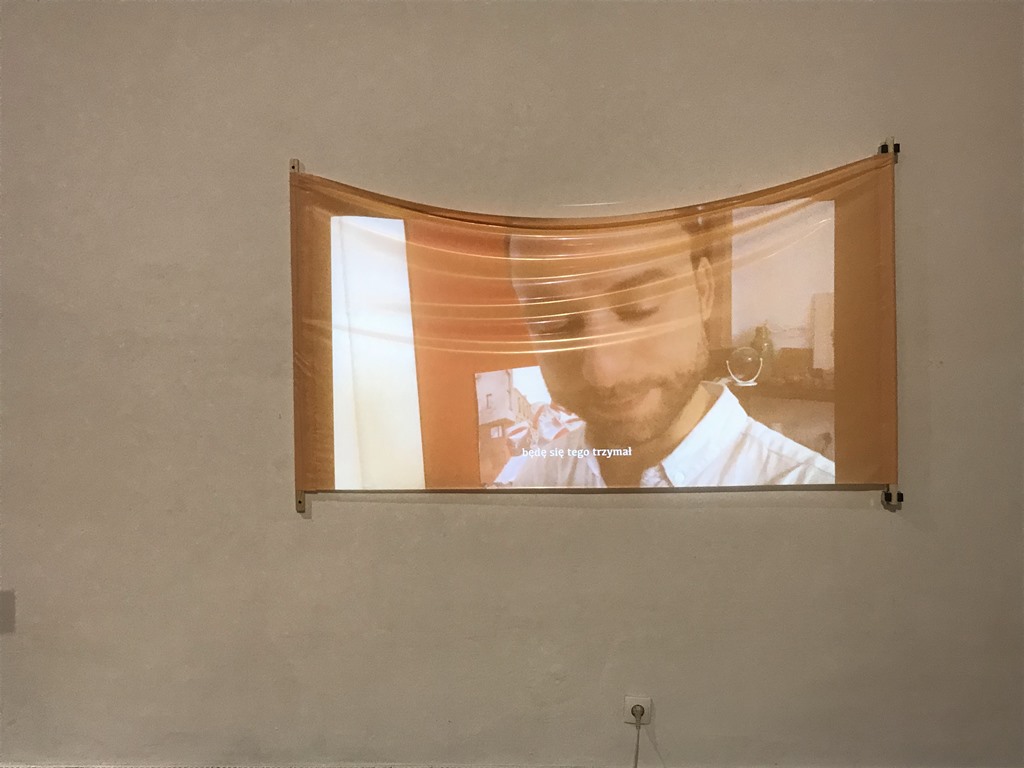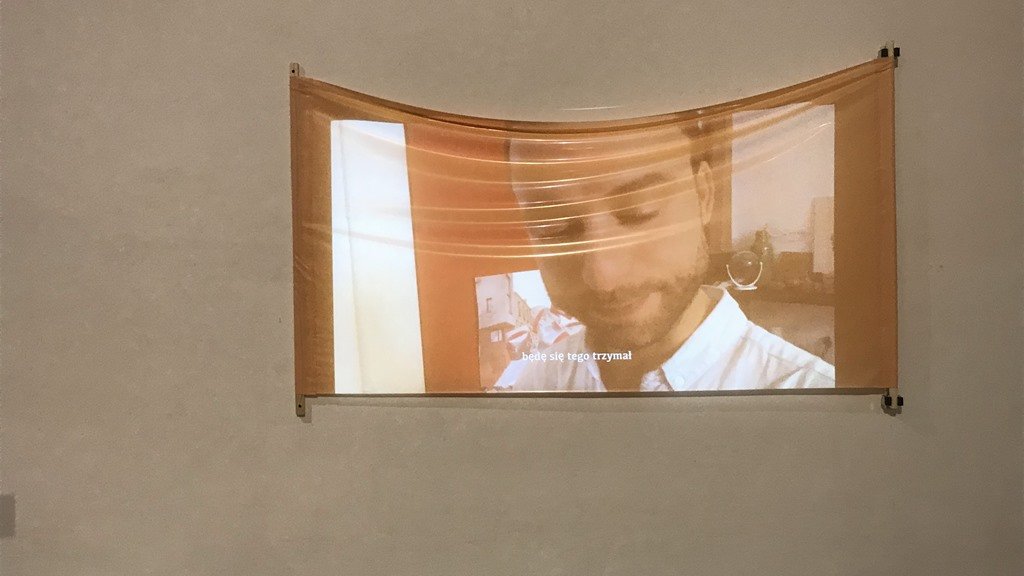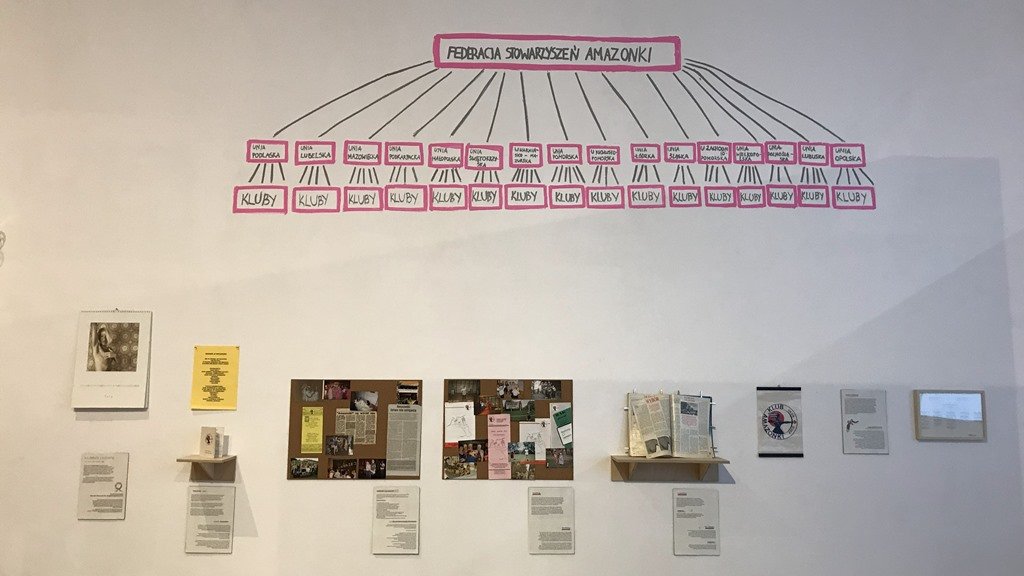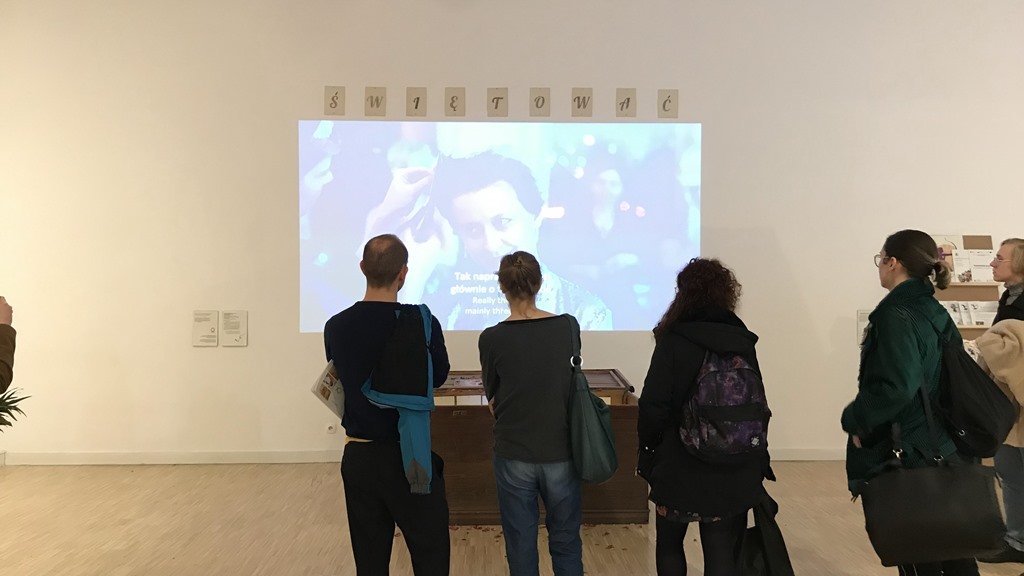Illness is life. Life is illness.

The curator's in-depth description of the exhibition and the type of works we would be seeing offered detailed insights into what the public could expect on the day of the vernissage. The exhibition has been an exhaustive project not only because of the range of works on topics so often shunned and barred from the public eye, but also due to the educational "charge" it carries, given that a significant portion of the display focuses on research into archive documents from various foundations.
A concise exhibition leaflet on the Creative States of Illness project in the form of a booklet makes it abundantly clear that the exhibition requires time, commitment and space. On the last day of the vernissage, space was in short supply - it took dozens of minutes from the official opening for the Arsenal for the venue to become calmer and less crowded, allowing the viewers to focus properly on the display items.
(In)visibility
There are indeed artists living with HIV and doing great. The Arsenal is one of the few establishments that engage in a discourse with the illness-as-a-metaphor stereotype known from Sontag's book AIDS and Its Metaphor. "My first HIV pill. Down it goes!" announces Szymon Adamczak in the Sugar for the Pill video. The artist shows that illness no longer entails social exclusion and stigma. Although he is only popping his first antiretroviral pill, knowing he will most likely have to take it daily for the rest of his life, he treats this as any other daily ritual. He takes the pill with a piece of cake, talking about his boyfriend, washes it down with a sip of vodka and raises a toast. "To life!" - goes the happy phrase. Because life is the everyday existence. And because illness is part of life.
Moments filled with glitter
A video projected on the gallery's wall shows Aneta Żukowska on the last day of 2017. The video is a self-portrait of the artist suffering from cancer, an account of head shaving, which becomes a peculiar celebration. Żukowska is pictured from behind, the viewer being shown only the back of her head, first being shaved, and then bald. All this time, the head is covered abundantly with glitter, which lends a unique sense of magic to these moments. Later, the artist is shown dancing, shrouded in surreal colours. At the end, the performance becomes a spectacle of sorts not about struggling with the disease but rather about the affirmation of life. Żukowska says: "Chaos, a carnival and fun - this is what my life is other than the disease. You can't build anything if you don't believe in the future. That is why I want to celebrate the crumbling, the tearing down of order, the abolition of stifling daily rules - I want to be a body that is aware it will pass and aware of its existence, and that derives as much pleasure from being there as is possible."
A symphony of breaths
One of the most palpable works in the exhibition was the project by Dobrawa Borkała made to resemble an incubator. Her breathing installation called Panic is a sensual examination of a panic attack that takes one through different stages and intensities of breathing. On entering the incubator, people fid themselves isolated from the rest of the exhibition and from the crowd milling about out there. Although Panic is fully transparent and placed in the very centre of the room, one can't help but feel an anxiety induced by accelerating breaths and a distinctive hospital smell adding another layer to "the way we feel". Panic attacks are a natural reaction of a diseased body brought about by chronic stress and compounded by the effects of medication. Even a brief stay in the installation will elevate one's anxiety levels causing one to experience a sudden growing sense of being overwhelmed that is characteristic for a panic attack.
The Sisters of Perpetual Pleasure
In the Arsenal, the Order of the Sisters of Perpetual Pleasure was represented by Sister Mary Read. During the opening, Read stayed in the so-called illness library. The room housed a collection of publications on disease conditions that ranged from research papers to publications on patient activism to pathographies. The Order of the Sisters of Perpetual Pleasure are on a mission to help the needy by engaging in broad community outreach and educational programmes drawing heavily on the ideas of spiritual enlightenment. The Order is one of many organisations brought in to take part in the Creative States of Illness. One section of the gallery is turned into an activism archive holding written sources, books of photographs with thank-you notes incribed in them and individual photographs.
The Creative States of Illness is a multi-thematic exhibition. Because of the sheer gravity of its subject matter and its commitment to debunking disease myths, it is an invitation to explore a world that is unfamiliar to many. And unfamiliar it is because the press and other media have avoided covering it. The accumulation of multiple themes in the exhibits on view may strike you as chaotic and confusing at first. However, this initial experience will subside as you tune in, become more discerning and eventually open up to a more intimate and more personal level of perception. Given that the Creative States of Illness is not merely an exhibition but also a community education project, it is best to visit the Arsenal Municipal Gallery multiple times. With every visit, you will gain further insights and see the stereotype of HIV, AIDS and cancer as the problem of individual people alone slowly fade away.
Klaudia Strzyżewska
translation: Krzysztof Kotkowski
Creative States of Illness: AIDS, HIV, Cancer, Arsenal Municipal Gallery, open until January 12
© Wydawnictwo Miejskie Posnania 2019
See more

From One Celebration to Another

Christmas Markets and Fairs with Attractions

Truly Festive Vibes



